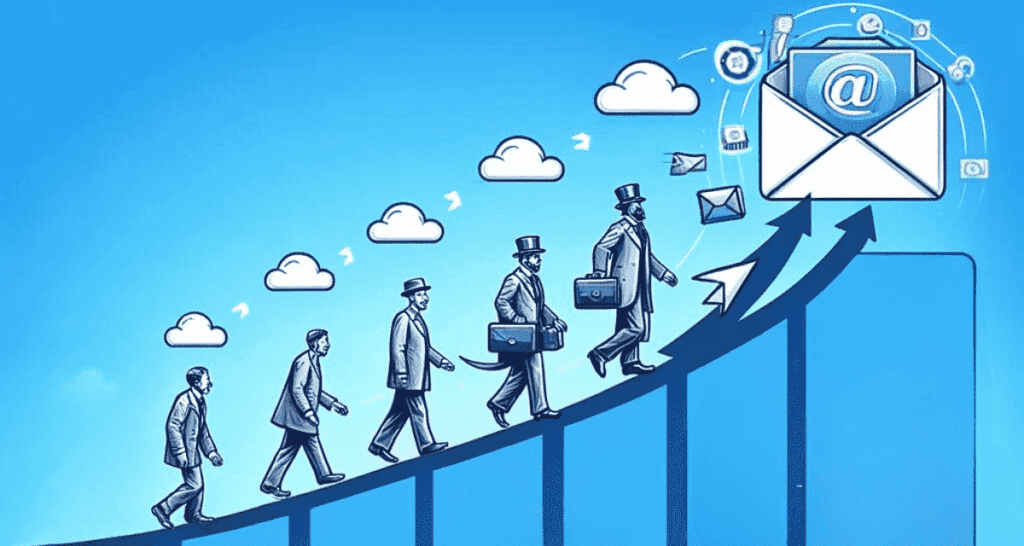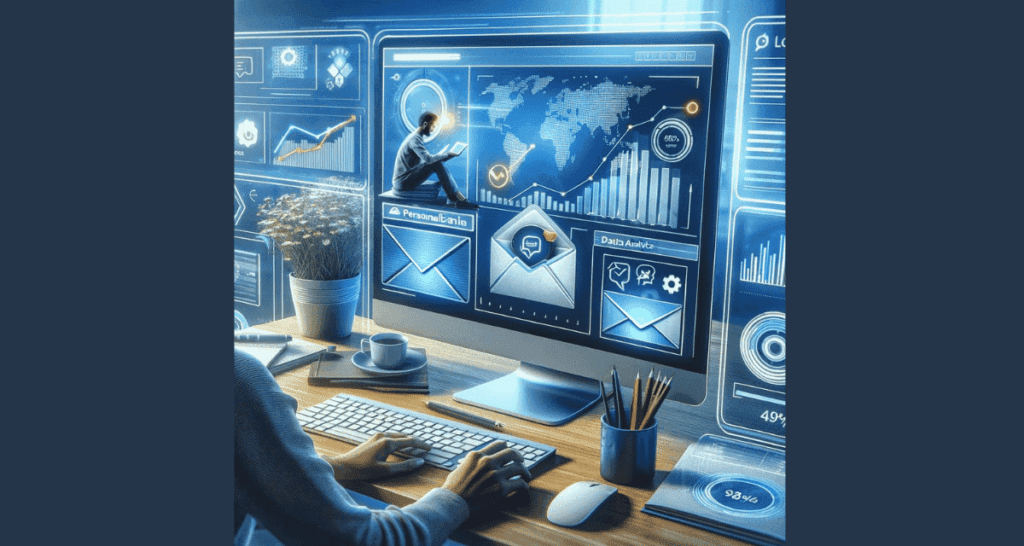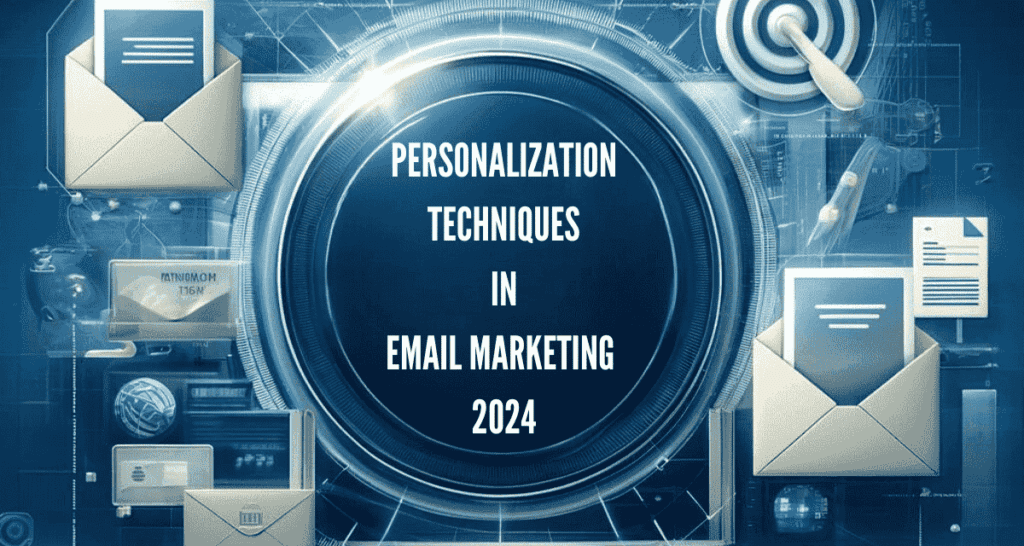Email marketing has evolved significantly over the years. As we move into 2024, personalization has become a key strategy for successful campaigns. This article will provide a comprehensive guide on personalization techniques in email marketing for 2024, suitable for both beginners and professionals.
Introduction
Opening Hook
Did you know that personalized emails can deliver six times higher transaction rates than non-personalized ones? In 2024, personalization in email marketing is more essential than ever. As competition intensifies and consumers demand more relevant content, personalized emails can significantly boost engagement and conversions.
Definition and Importance of Personalization in Email Marketing
Personalization in email marketing refers to tailoring your email content to the individual needs, preferences, and behaviors of your subscribers. This can range from using the recipient’s first name in the subject line to crafting entire emails based on past purchase behavior or browsing history.
Increased Engagement: Personalized emails are more likely to be opened and clicked.
Higher Conversions: Tailored content can directly lead to increased sales and customer loyalty.
Customer Satisfaction: When customers receive content that resonates with their interests, they feel valued and understood.
We have written a comprehensive guide on Is Email Marketing Still Worth It in 2024?
Evolution of Email Personalization


Historical Overview
Email personalization has come a long way since the early days of digital marketing. Initially, personalization meant addressing the recipient by their first name. Over the years, it has evolved to include more sophisticated techniques such as segmentation, dynamic content, and AI-driven recommendations.
Key Personalization Techniques for 2024
Dynamic Content
Dynamic content in emails means that the content changes based on user data. Each recipient sees content tailored specifically to them, making the email more relevant and engaging.
Examples of Dynamic Content
Product Recommendations: Suggest products based on past purchases or browsing behavior.
Tailored Offers: Provide discounts or special offers that align with the recipient’s interests.
Dynamic content can significantly increase click-through rates and conversions by delivering precisely what the subscriber is looking for.
Behavioral Trigger Emails
Behavioral trigger emails are sent based on specific actions taken by the user. These emails are highly relevant and timely, leading to better engagement.
Examples of Trigger Emails
Cart Abandonment Emails: Remind customers of the items left in their shopping carts.
Browse Abandonment Emails: Send follow-ups based on products the customer viewed but didn’t purchase.
Post-Purchase Emails: Thank customers for their purchase and suggest related products.
Using behavioral triggers ensures that your emails reach customers when they are most likely to engage, boosting your overall email performance.
Advanced Segmentation Strategies
Segmentation is the process of dividing your email list into smaller groups based on specific criteria. In 2024, advanced segmentation techniques are essential for effective personalization.
Advanced Techniques
Micro-Segmentation: Create highly specific segments based on detailed criteria.
Psychographic Segmentation: Segment customers based on their values, attitudes, and lifestyle.
By using advanced segmentation strategies, you can send more relevant emails to each group, increasing the likelihood of engagement.
Hyper-Personalized Subject Lines
Subject lines are the first thing recipients see, making them crucial for email success. Hyper-personalized subject lines can significantly increase open rates.
Crafting Effective Subject Lines
Use the Recipient’s Name: Personalize the subject line with the recipient’s name.
Reflect Past Behavior: Mention previous purchases or interests.
Create Urgency: Employ time-sensitive language to prompt immediate action.
A well-crafted subject line can make the difference between an opened email and one that gets ignored.
Personalized Visual Elements
Visual elements in emails, such as images and videos, can also be personalized to enhance engagement.
Techniques for Personalized Visuals
Dynamic Images: Use images that change based on the recipient’s preferences or past behavior.
Personalized Videos: Create videos that address the recipient by name or refer to their past interactions.
Personalized visuals can make your emails more engaging and memorable, leading to higher click-through rates.
Real-Time Personalization
Real-time personalization involves tailoring email content based on real-time data. This ensures that your emails are always relevant and up-to-date.
Technologies for Real-Time Personalization
Real-Time Data Integration: Use tools that integrate with your CRM and other data sources to provide real-time updates.
Behavioral Tracking: Monitor user behavior on your website and adjust email content accordingly.
By implementing real-time personalization, you can ensure that your emails are always relevant, leading to higher engagement and conversions.
Implementing Personalization in Email Marketing Campaigns


Personalizing your email marketing campaigns is not just about understanding the techniques; it’s also about implementing them effectively. Here’s how you can put these personalization techniques into practice.
Collecting and Managing Customer Data
Effective personalization starts with data. The more you know about your customers, the better you can tailor your emails to their needs and preferences.
Best Practices for Data Collection
Sign-Up Forms: Use detailed sign-up forms to gather essential information such as name, email address, preferences, and interests.
Surveys and Feedback: Regularly send surveys to understand customer satisfaction and preferences. Use feedback to enhance your personalization efforts.
Purchase History: Track past purchases to recommend similar or complementary products.
Tools and Platforms
Customer Relationship Management (CRM) Systems: CRMs like Salesforce and HubSpot help you manage and analyze customer interactions and data throughout the customer lifecycle.
Data Analytics Platforms: Tools like Google Analytics and Tableau can provide insights into customer behavior and preferences.
Managing and analyzing customer data effectively enables you to create highly personalized email campaigns that resonate with your audience.
Choosing the Right Email Marketing Platform
Selecting the right email marketing platform is crucial for implementing advanced personalization techniques. Here are some features to look for and top recommendations for 2024.
Features to Look For
Dynamic Content Capabilities: Ensure the platform supports dynamic content, allowing you to personalize emails for each recipient.
Segmentation Options: Look for robust segmentation features that enable advanced and micro-segmentation.
AI Integration: Platforms with AI capabilities can help you predict customer behavior and optimize content.
Real-Time Data Integration: Choose a platform that integrates with your CRM and other data sources for real-time personalization.
Recommended Platforms
Mailchimp: Known for its user-friendly interface and powerful segmentation tools.
HubSpot: Offers comprehensive CRM integration and advanced personalization features.
ActiveCampaign: Provides robust automation and dynamic content capabilities.
By selecting the right email marketing platform, you can ensure that you have the tools necessary to implement effective personalization strategies.
Creating Personalized Email Templates
Designing email templates that allow for dynamic content and personalization is essential for a successful campaign.
Step-by-Step Guide to Designing Templates
Choose a Flexible Template: Start with a template that is easy to customize and supports dynamic content blocks.
Incorporate Dynamic Content Blocks: Use content blocks that can change based on the recipient’s data.
Personalize Images and Videos: Include placeholders for personalized images and videos that adjust based on the recipient’s preferences.
Test the Template for Responsiveness: Ensure that your template looks good on all devices, including desktops, tablets, and smartphones.
Best Practices and Tips
Keep It Simple: Avoid cluttered designs. Focus on clear, concise content that is easy to read.
Highlight Personalization: Make sure personalized elements stand out to capture the recipient’s attention.
Use A/B Testing: Test different versions of your templates to see which performs better in terms of engagement and conversions.
By following these steps and best practices, you can create personalized email templates that enhance the user experience and drive better results.
Testing and Optimization
Regular testing and optimization are crucial for the success of your personalized email marketing campaigns.
Importance of A/B Testing
A/B testing entails sending two versions of an email to a small segment of your audience to determine which one performs better.
Test Different Elements: Experiment with subject lines, content, images, and call-to-actions to see what resonates most with your audience.
Measure Results: Look at open rates, click-through rates, and conversions to determine which version is more effective.
Implement Changes: Use the insights gained from A/B testing to refine and improve your email campaigns.
Continuous Improvement
Personalization is not a one-time effort. It requires continuous monitoring and optimization.
Regularly Update Data: Ensure that your customer data is always up-to-date for accurate personalization.
Analyze Performance: Use analytics tools to track the performance of your emails and identify areas for improvement.
Stay Informed:Stay abreast of the latest trends and technologies in email marketing to maintain a competitive edge.
By continuously testing and optimizing your personalized email campaigns, you can ensure that they remain effective and relevant.
Expert Opinions and Insights
Industry experts predict that real-time personalization and AI-driven strategies will continue to dominate email marketing in 2024. Here are some insights from leading professionals:
Marketing Strategist: “Real-time personalization is the future of email marketing. The ability to tailor content based on real-time data is a game-changer for engagement.”
AI Specialist: “AI and machine learning are transforming how we approach email marketing. Predictive analytics and customer segmentation are now more accurate than ever.”
Email Marketing Consultant: “Hyper-personalized emails are essential for standing out in a crowded inbox. Personalized subject lines and dynamic content can significantly boost open and click-through rates.”
These expert insights underscore the importance of staying updated with the latest trends and technologies in email personalization.
We also have written on Email Marketing Campaign Examples.
Conclusion
Summary of Key Points
Personalization in email marketing is essential for success in 2024. By leveraging techniques such as dynamic content, behavioral triggers, AI integration, and real-time personalization, you can create highly relevant and engaging email campaigns. Implementing these strategies requires careful data management, the right tools, and continuous optimization.
Final Thoughts and Encouragement
The future of email marketing lies in personalization. As technology advances and consumer expectations evolve, staying ahead of the curve with personalized content will set you apart from the competition. Embrace these techniques and continuously refine your approach to achieve the best results.
- Cost-Effectiveness of Email Marketing for Startups in 2024 - May 21, 2024
- How to Integrate AI with Email Marketing in 2024 - May 20, 2024
- Building an Email List in 2024: Strategies and Tips - May 17, 2024

